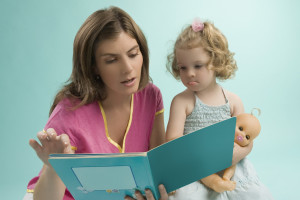
“You can’t help your child learn anything if you don’t teach them to listen and pay attention. That’s what you have to do first.”
I overheard Tricia, a mother of three, as she visited with a father at a parent get-together.
Afraid of breaking a child’s spirit, we are sometimes reluctant to “make” a child do something. With clear, consistent structure and expectations, we can help our children learn to listen and pay attention. Without these two skills, learning becomes difficult.
One of the wonderful things about working with three-, four- and five-year-olds is we can sing and play to learn.
If you are working with children who are having difficulty responding to their names and requests, sing songs using their names. A favorite is “Mary Wore Her Red Dress.”
Gather a group, being sure you have enough time to include every child in the song. Select a child’s name and a piece of clothing and substitute this into the song. When the child’s name is sung, he or she skips around the inside of the circle. For children who are having difficulty listening, call on them near the end.
The words follow:
Mary wore her red dress, red dress, red dress.
Mary wore her red dress all day long.
Johnny wore his white shirt, white shirt, white shirt.
Johnny wore his white shirt all day long.
Another favorite song for transitioning into a new activity follows:
Wibbly wobbly wee, and elephant sat on me.
Wibbly wobbly woo, an elephant sat on you.
Wibbly wobbly woosan, an elephant sat on Susan.
Wibbly wobbly wichael, an elephant sat on Michael.
“What’s That Sound?” is a fun game for one or more children.
Ask the children to face away from you and cover their eyes. Make different sounds. For example, snap your fingers, clap your hands, click your tongue, rub your hands together, jingle jewelry, tap a finger on a table, rustle clothing, tap a glass or pull a tissue out of a box. Use your imagination. After each action ask, “What’s that sound?” If one child dominates the game, call on individual children.
Reading out loud everyday will help your child learn to listen.
Even if you start out reading one minute a day, keep adding a minute a day until you get to thirty minutes. If your child walks around the room while you read, keep reading. Your child may have a learning style where movement is important. Many children (and adults) are able to move and listen at the same time. To “test” listening skills, change a few words to a familiar story.
Children need to learn to hear silence.
Claude Debussy is quoted as saying, “Music is the silence between notes.” Appreciation of silence allows us to hear what is important. The word “obey” has roots in the Old English word “obeyer,” meaning “to listen.” When our children know how to listen to both sounds and silence, they can choose to respond with ability, or in other words, become responsible.
To help your children appreciate silence, play “The Silence Game.”
Darken a room, and ask your children to listen and not talk. Count silently, using your fingers to help your children focus on staying silent. Sit quietly for 60 seconds, and then ask what they hear. Lengthen the time by thirty seconds each time you play. This is a simple but powerful learning game.
Sing songs, read out loud and play games to help your children learn how to listen and pay attention.
Tricia’s advice was right. It’s what we have to do first.


Very practical article with good ideas for developing the virtue of listening.
For silence we practice closing our eyes and looking inward. Essentially paying attention to the in breadth and out breadth .
Do you agree this helps learning in silence by way of mindfulness?
Nomita,
Yes, quiet reflective meditation is a great tool.
Thanks for sharing that.